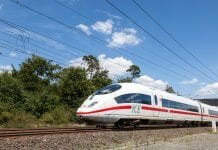
Smart city projects make use of data collection software and the Internet of Things (IoT) to streamline and facilitate various aspects of city life; but smart city safety must continue to be a factor in the design and implementation of such projects.
Smart cities by their nature rely on interconnectedness and data retention, but this can lead to potential risks of cyber breaches and subsequent data theft. Smart city safety concerns are not just limited to virtual risks: physical security and cybersecurity, in a smart city context, are interlinked. If a traffic control app is hacked, the resulting chaos could place citizens in actual physical danger.
The rail industry has been a forerunner in the field of smart city safety: aside from being one of the safest modes of transportation available, train companies have leaned into the use of new technologies to make processes simpler and safer both for users and staff. Collection and analysis of safety data on railways in the UK has resulted in a real terms risk reduction of 26 per cent at level crossings and 11 per cent for derailments between 2014 and 2018. Meanwhile, in the face of 94 per cent of surveyed rail staff reporting workplace abuse in the past 12 months, the rail industry has been rolling out technological solutions, such as body cameras, to improve the safety and wellbeing of their staff.
Smart highways and intuitive traffic management also play a role in smart city safety solutions. With well-managed data collection and analysis, highway authorities and law enforcement are better able to identify safety hazards, areas where safety risks peak and the optimum placement for traffic cameras.
Other IoT developments geared at improving smart city safety by using technology to reduce road hazards include car ignitions that will not start if the driver has a high blood alcohol level; electronic time logging devices to prevent fleet drivers from driving beyond the recommended hours, thus reducing fatigue; and roadside devices which communicate real time information about roadworks and weather conditions to vehicles and drivers.


















